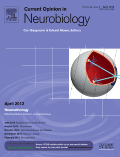
NATURE REVIEWS NEUROSCIENCE
Scope & Guideline
Elevating understanding in the realm of neuroscience.
Introduction
Aims and Scopes
- Neuroscientific Mechanisms and Processes:
The journal explores the fundamental mechanisms underlying neural function, including synaptic plasticity, neural circuitry, and molecular signaling pathways. - Behavioral and Cognitive Neuroscience:
Research articles delve into the neural correlates of behavior, cognition, and emotional processes, linking brain function to psychological phenomena. - Neurodevelopment and Aging:
Focus on the development of the nervous system across lifespan, including neurogenesis, maturation, and the impact of aging on brain function and structure. - Neurodegenerative Disorders:
The journal addresses the biological and molecular underpinnings of various neurodegenerative diseases, providing insights into pathology and potential therapeutic approaches. - Neuroimmunology and Neuroinflammation:
Research highlights the interaction between the nervous system and immune responses, exploring how inflammation affects neural health and disease. - Technological Advances in Neuroscience:
The publication emphasizes innovative methodologies and technologies that enhance our understanding of neural dynamics, including imaging techniques and computational models.
Trending and Emerging
- Neurotechnology and Brain-Machine Interfaces:
Recent publications highlight advancements in neurotechnology, including brain-computer interfaces and neuroprosthetics, which are revolutionizing rehabilitation and therapeutic strategies. - Mental Health and Neuropsychiatric Disorders:
There is an increasing focus on the neural basis of mental health conditions, emphasizing the need for integrative approaches to understanding complex psychiatric disorders. - Neuroinflammation and Gut-Brain Axis:
Research on the connections between gut microbiota, neuroinflammation, and their impact on neurological conditions is gaining traction, reflecting a holistic view of brain health. - Precision Medicine in Neuroscience:
Emerging themes include the application of precision medicine approaches in neuroscience, integrating genomics and personalized therapies for neurodegenerative disorders. - Neuronal and Non-neuronal Cell Interactions:
The exploration of interactions between neurons and non-neuronal cells, such as glia and immune cells, is becoming a focal point in understanding brain function and pathology.
Declining or Waning
- Basic Cellular Neuroscience:
While foundational studies remain important, there has been a noticeable decline in purely cellular-level investigations, as the field shifts towards integrative and systems-level analyses. - Single-Disorder Focus:
There has been a move away from articles focusing solely on individual disorders toward more comprehensive reviews that consider multiple conditions and shared mechanisms. - Animal Models in Neurobiology:
The reliance on traditional animal models for mechanistic studies appears to be waning, with increasing emphasis on human data and translational approaches. - Static Neuroanatomy:
Research emphasizing static anatomical descriptions of neural structures has decreased, as dynamic and functional imaging techniques gain prominence. - Psychopharmacology of Traditional Agents:
Studies centered on classical pharmacological agents are less frequent as novel therapeutic pathways and treatments, including gene therapy and neuromodulation, are explored.
Similar Journals

NATURE NEUROSCIENCE
Shaping the Future of Neuroscience, One Article at a TimeNATURE NEUROSCIENCE is a premier journal published by NATURE PORTFOLIO, focusing on cutting-edge research in the field of neuroscience. With an esteemed impact factor that reflects its significance in the academic community, this journal occupies an exceptional place in the 2023 Q1 category for neuroscience (miscellaneous) and boasts a leading Scopus rank of #1 out of 113 in general neuroscience, placing it within the top 1st percentile. Since its inception in 1998, NATURE NEUROSCIENCE has consistently delivered high-quality, peer-reviewed articles that contribute to our understanding of the nervous system, driving innovation and scholarship across disciplines. Although it does not offer open access, the journal remains a vital resource for researchers, professionals, and students seeking to stay at the forefront of neuroscientific discovery and discussion. Its editorial commitment to excellence ensures that it continually shapes the trajectory of neuroscience research well into 2024 and beyond, making it an indispensable asset for anyone passionate about the brain and its complexities.

TRENDS IN NEUROSCIENCES
Unveiling the Latest Trends in Brain ScienceTRENDS IN NEUROSCIENCES, published by CELL PRESS, is a leading journal in the field of neuroscience, offering cutting-edge insights and important developments in the rapidly evolving landscape of brain research. With an impressive Impact Factor and ranking in the top quartile (Q1) of the category for Neuroscience (miscellaneous), it is positioned as a vital resource for researchers and professionals seeking to stay abreast of the latest discoveries and trends from 1978 to the present. Specifically ranked #3 out of 113 in General Neuroscience by Scopus, this journal promotes the interdisciplinary exchange of ideas and knowledge, making it an essential platform for students and experienced scholars alike. Although it is not an Open Access journal, its value lies in its rigorous peer-review process and commitment to maintaining the highest standards of academic integrity. By continuing to explore the complexities of neural processes and behavior, TRENDS IN NEUROSCIENCES plays a crucial role in shaping the future of neuroscience research and education.

Frontiers in Systems Neuroscience
Unlocking the secrets of neural systems.Frontiers in Systems Neuroscience is a premier open-access journal published by FRONTIERS MEDIA SA, dedicated to advancing the understanding of the complex systems that underpin neural function and behavior. Established in 2007 and based in Switzerland, this journal has gained recognition for its rigorous peer-reviewed articles that contribute significantly to the fields of Cellular and Molecular Neuroscience, Cognitive Neuroscience, and Developmental Neuroscience. As of 2023, it proudly holds a Q2 ranking in several neuroscience categories, reflecting its high impact and relevance in the academic community. The journal is accessible to researchers, professionals, and students worldwide, providing a platform for innovative research while promoting collaborative scientific dialogue. With a commitment to open access, Frontiers in Systems Neuroscience ensures that groundbreaking findings are readily available to enhance knowledge sharing across the globe. This makes it an essential resource for anyone looking to stay at the forefront of neuroscience research.

CURRENT OPINION IN NEUROBIOLOGY
Shaping the Future of Neuroscience Through Insightful ReviewsCURRENT OPINION IN NEUROBIOLOGY, published by CURRENT BIOLOGY LTD, stands as a premier interdisciplinary journal in the field of neuroscience, specifically focusing on the latest advancements and emerging trends in neurobiology. With an impressive impact factor bolstered by its classification in Q1 in the Neuroscience (Miscellaneous) category and a notable Scopus rank of #16 out of 113 within General Neuroscience, this journal serves as an essential resource for academics, professionals, and students alike. Since its inception in 1991, CURRENT OPINION IN NEUROBIOLOGY has consistently provided insightful reviews covering various aspects of neurobiological research, thereby enhancing our understanding of complex neural processes. While the journal is not open access, it remains committed to disseminating high-quality research and fostering scholarly dialogue, making it a critical platform for those seeking to keep abreast of the dynamic developments in neuroscience.

Annual Review of Neuroscience
Empowering Neuroscience Through Comprehensive ReviewsThe Annual Review of Neuroscience, published by Annual Reviews, is a premier journal that has been at the forefront of neuroscience research since its inception in 1978. With an ISSN of 0147-006X and E-ISSN 1545-4126, this leading academic journal boasts a remarkable impact factor, placing it in the prestigious Q1 category in Neuroscience (miscellaneous), with an impressive Scopus ranking of 4 out of 113 and a stellar 96th percentile in general neuroscience. Focused on publishing comprehensive and authoritative review articles, the Annual Review of Neuroscience aims to synthesize and critically evaluate the latest advances in the field, making it an indispensable resource for researchers, professionals, and students alike. While it does not offer open access, the insights and discoveries highlighted in its issues are crucial for those dedicated to understanding the complexities of the nervous system and driving forward innovative research. With a commitment to excellence and a forward-looking perspective, this journal continues to shape and influence the future of neuroscience.

SYNAPSE
Fostering Innovation in Neuroscience ResearchSYNAPSE, an esteemed journal in the field of Cellular and Molecular Neuroscience, is published by Wiley and serves as a vital platform for disseminating groundbreaking research in neuroscience. Established in 1987, this journal has been pivotal in exploring the intricate mechanisms governing synaptic function and neural communication, contributing to our understanding of the nervous system. With an ISSN of 0887-4476 and an E-ISSN of 1098-2396, SYNAPSE is indexed in Scopus and currently holds a Q4 quartile ranking in its category, reflecting its niche yet significant presence within the research community. Despite its recent ranking in the 21st percentile among its peers, the journal’s commitment to quality and innovation remains unwavering. It is published from Hoboken, New Jersey, and although it is not an open-access journal, it provides invaluable insights and critical reviews that are pivotal for researchers, professionals, and students alike who seek to advance their knowledge in the dynamic field of neuroscience. Join us in contributing to the ever-evolving discourse in cellular and molecular neuroscience through SYNAPSE.

Neural Development
Connecting Global Minds in Developmental NeuroscienceNeural Development, published by BMC, is a premier open access journal dedicated to advancing the field of Developmental Neuroscience. Established in 2006, this journal continues to foster high-caliber research on the cellular and molecular mechanisms underlying neural development, contributing significantly to our understanding of brain structure and function. With a commendable Q1 ranking in the 2023 category of Developmental Neuroscience and a notable position as the 8th out of 37 journals in the field on Scopus, it is recognized for its rigorous peer-review process and impactful publications. Researchers, professionals, and students benefit from the widespread accessibility of its content in an evolving landscape of neuroscience studies. As an open-access journal, Neural Development ensures that groundbreaking discoveries are available to a global audience, facilitating collaboration and innovation in the exploration of neural mechanisms. With its strong commitment to quality and relevance, this journal remains at the forefront of developmental neuroscience research.

CORTEX
Advancing Understanding of the Brain and BehaviorCORTEX is a premier international journal published by Elsevier Masson, focusing on the cutting-edge areas of cognitive neuroscience, psychology, and neurology. With an impressive impact factor that places it in Q1 quartiles across multiple categories such as Cognitive Neuroscience and Neuropsychology, this journal serves as a vital resource for researchers, clinicians, and students alike. Established in 1964, CORTEX has continued to excel in disseminating high-quality scholarly work, offering insights that significantly enhance our understanding of the brain's functioning and behavior. Although not an open-access publication, it provides various access options to ensure the dissemination of knowledge is as wide-reaching as possible. As the field of cognitive psychology evolves, CORTEX remains at the forefront, fostering an environment for interdisciplinary collaboration and innovation. Researchers seeking to stay engaged with the latest advancements will find CORTEX an indispensable tool for their professional development.

CEREBRAL CORTEX
Elevating the discourse in neuroscience research.CEREBRAL CORTEX, published by Oxford University Press Inc, is a premier journal dedicated to advancing the field of neuroscience, specifically focusing on the cellular, molecular, and cognitive aspects of cortical structure and function. With an impressive impact factor that situates it in the top quartile (Q1) of its categories for 2023, this journal holds significant relevance for researchers and professionals interested in the latest discoveries and methodologies in both Cognitive Neuroscience (ranked #31 out of 115) and Cellular and Molecular Neuroscience (ranked #48 out of 97). Operating without an open access model, it ensures rigorous peer review and dissemination of high-quality research from across the globe. Since its inception in 1991, CEREBRAL CORTEX has established itself as a critical platform for educators and inventors, pushing the boundaries of knowledge in understanding brain function and its implications for behavior. Researchers and students alike will find this journal an invaluable resource for both foundational and cutting-edge studies in neuroscience.

Science Bulletin
Exploring the frontiers of multidisciplinary research.Science Bulletin is a premier multidisciplinary journal published by Elsevier, renowned for its commitment to advancing scientific knowledge across various fields. With an impressive impact factor and achieving a distinguished Q1 category ranking in 2023 within its multidisciplinary scope, Science Bulletin stands out for its rigorous peer-review process and high-quality research dissemination. Since its inception in 2015, the journal has been pivotal in bridging gaps between diverse scientific disciplines, fostering collaboration and innovation. Researchers and professionals can benefit from its Open Access options, ensuring wider visibility and accessibility of groundbreaking research. With a Scopus rank of #4 out of 171, placing it in the 97th percentile, Science Bulletin continues to set the standard for scholarly excellence, making it an essential resource for those seeking to stay at the forefront of scientific discovery.